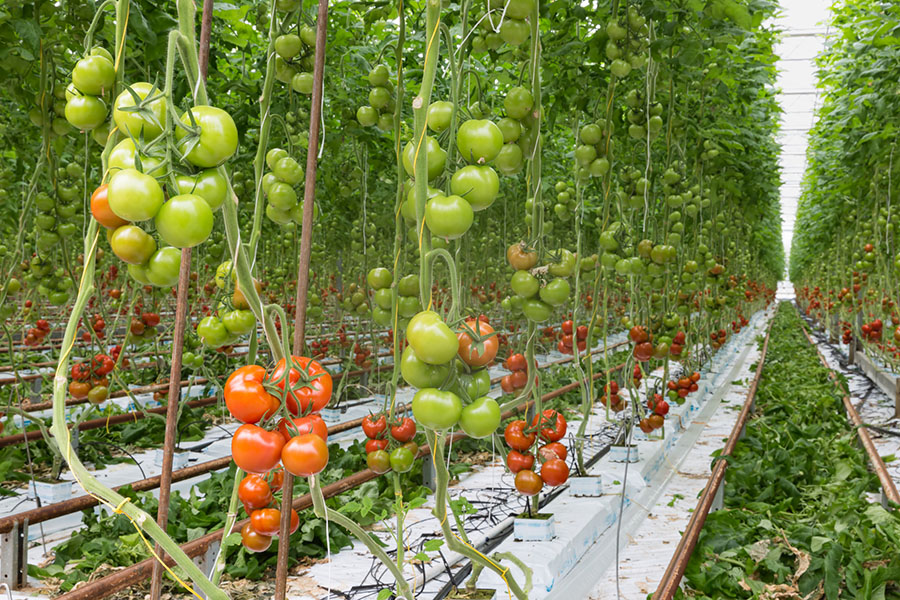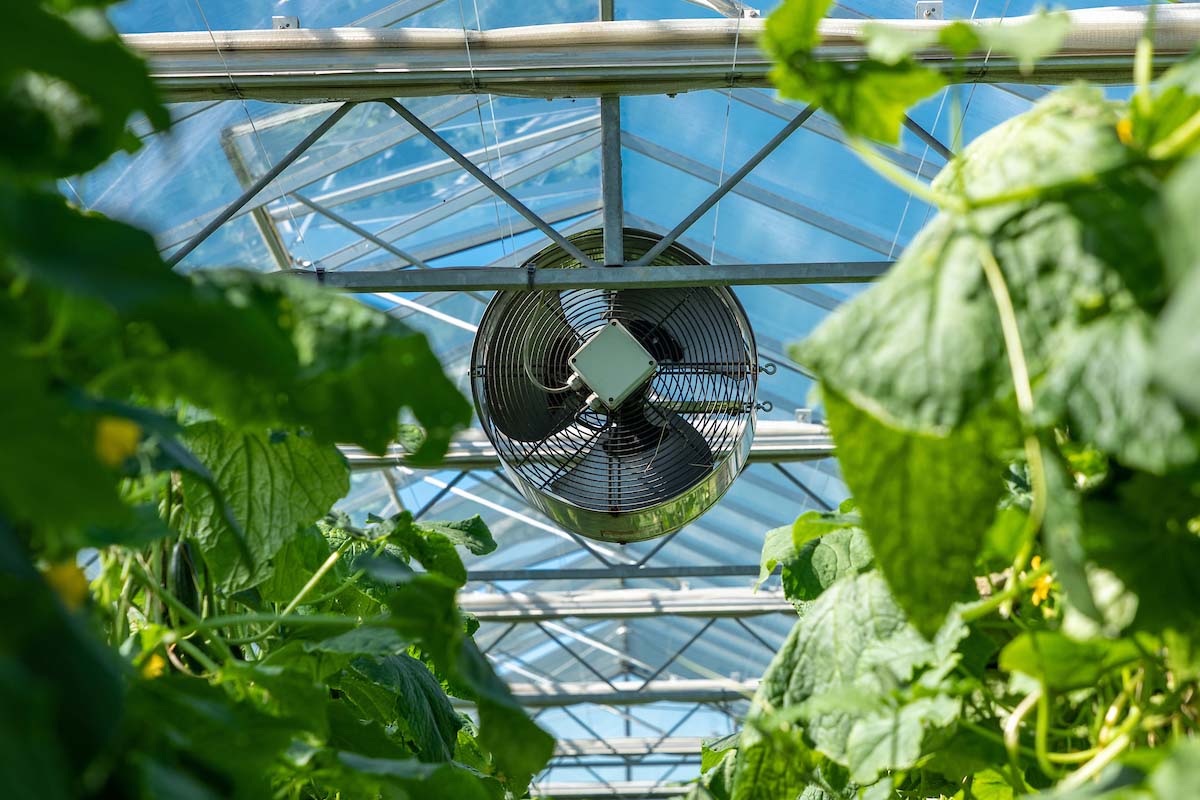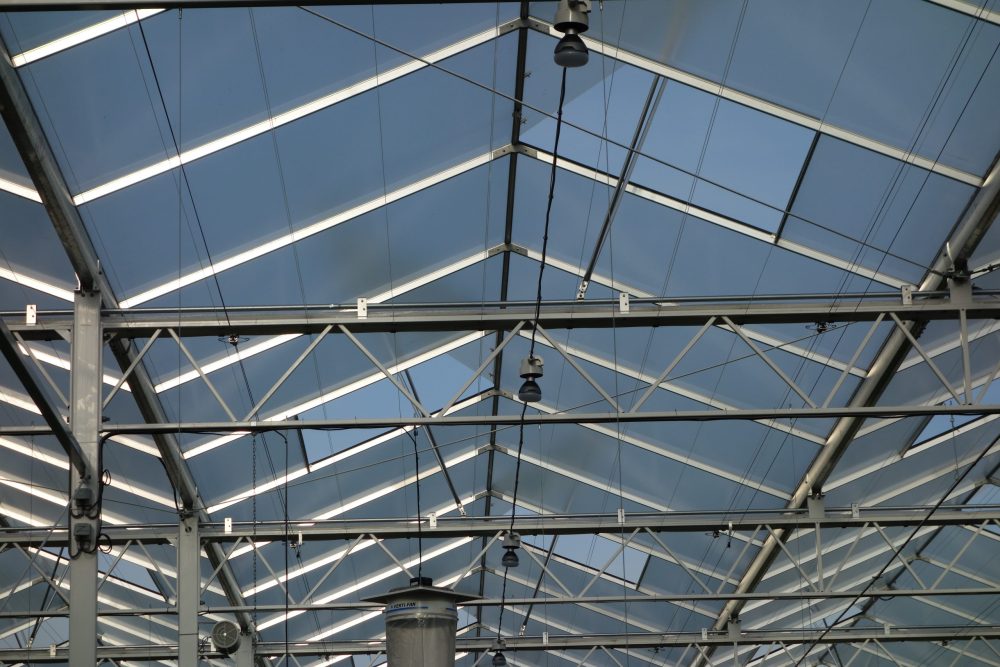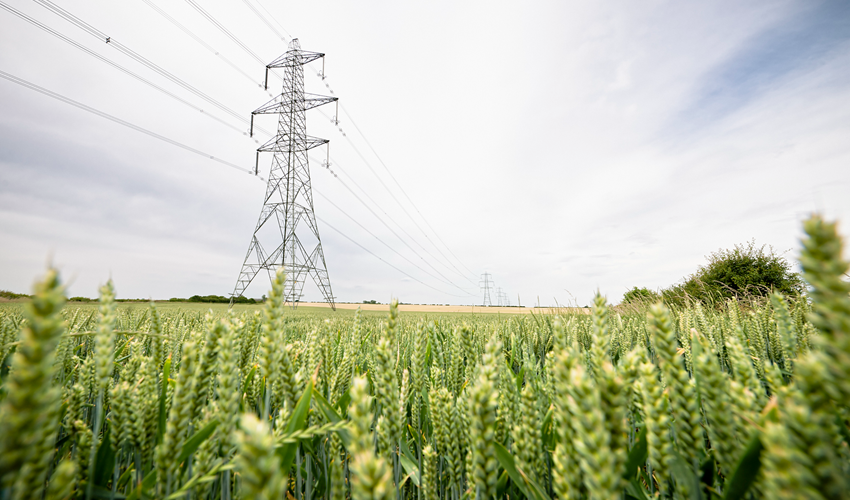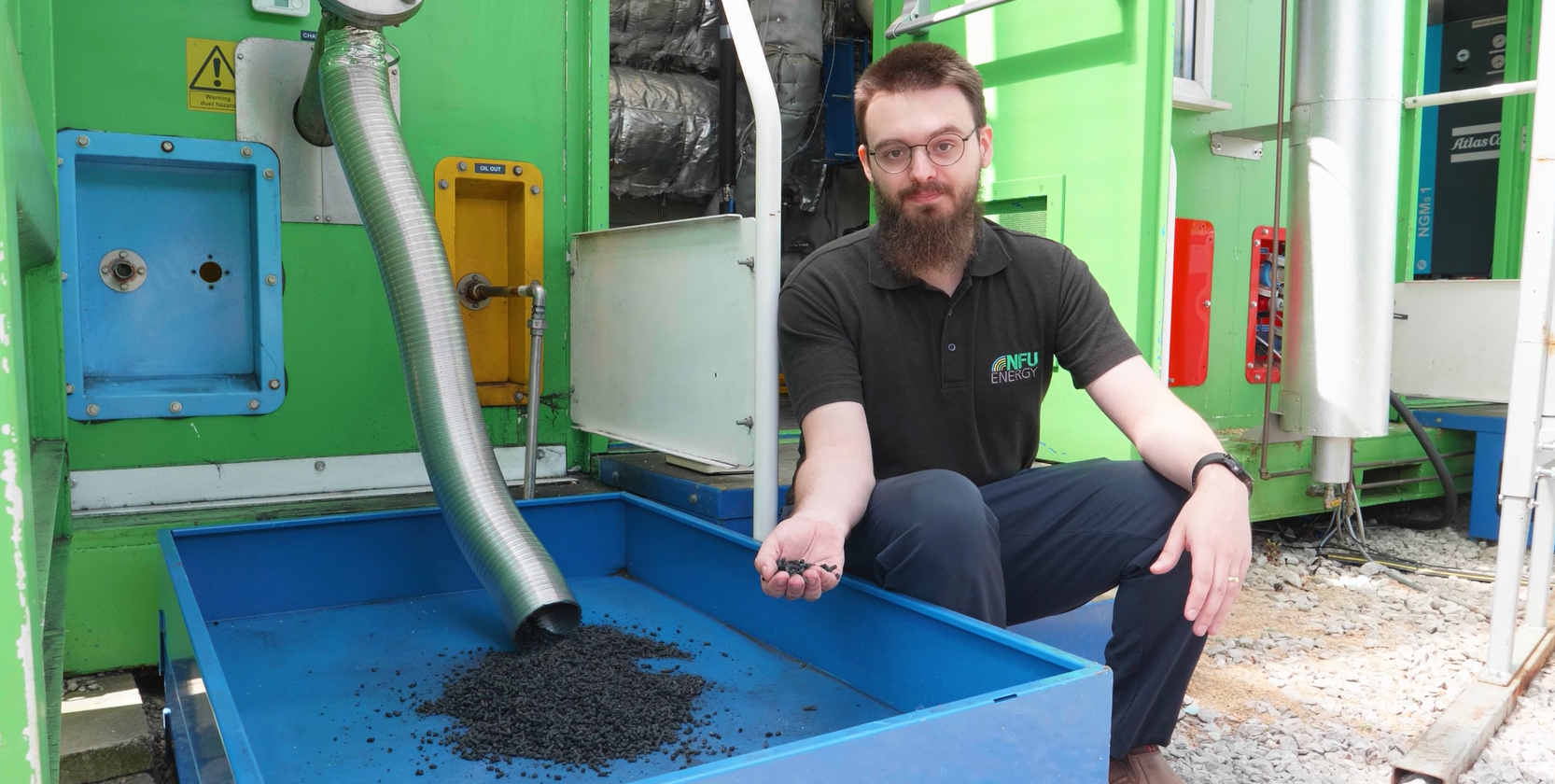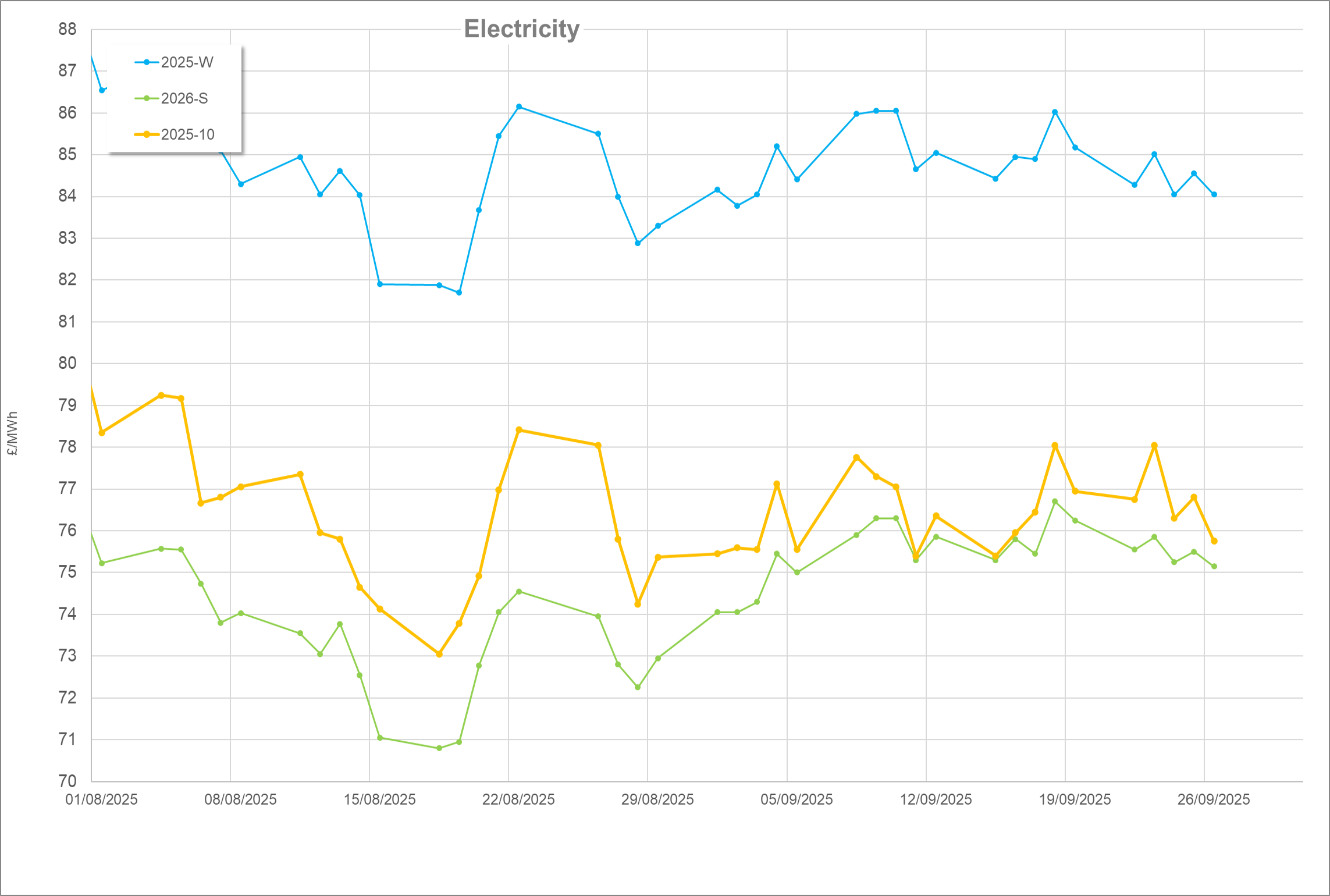With rising costs of energy and pressure from retailers to reduce carbon emissions, controlled environment horticulture (CEH) has been moving towards even higher efficiency production in glasshouse models. This often comes in the form of ‘closed’ or ‘semi-closed’ designs. These systems minimise air infiltration and attempt to maintain an indoor environment to maximise the effectiveness of any added heat and CO2.
With closed designs, humidity control becomes one of the big challenges. Traditionally, humidity is managed by adding heat to the structure, which encourages evaporation, and opening the vents to force the warm humid air out.
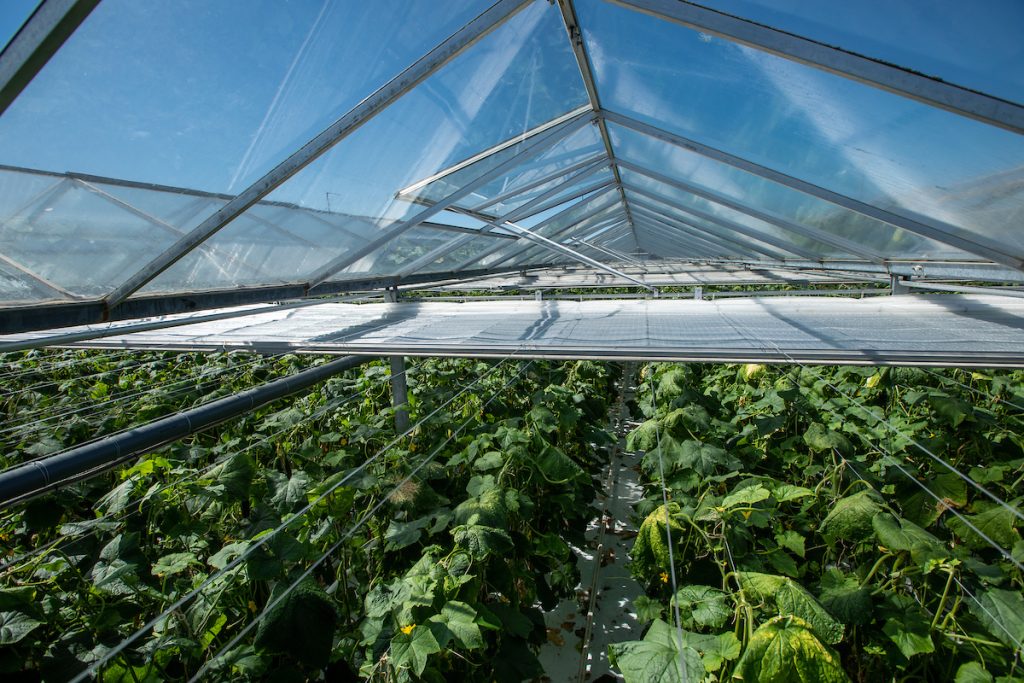
Although this method works, the issue is that it requires a lot of energy in raising air and water temperature, generating convection currents, and evaporating the water. This energy is then lost to atmosphere through the vents, alongside any CO2 used for enrichment.
Instead, closed designs often use active dehumidification, through one of several systems.
Humidity: the definitions
To understand dehumidification, it’s important to first understand humidity and the terms used to describe it:
Relative Humidity (RH)
- Shown as a percentage, RH is a ratio of the amount of water held in the air compared to the maximum amount of water that can be held in the air at its current temperature (i.e. fully saturated).
- The saturation point of air increases with temperature, meaning that RH can decrease without any water being removed.
Absolute Humidity (AH)
- Shown as a figure of g/m3, AH is a measure of the mass of water held in the air.
- AH remains constant as long as the same amount of moisture is in the air, regardless of temperature change.
Humidity Deficit (HD)
- Again, shown as a figure of g/m3, HD is the mass of water needed to reach the saturation point at the current temperature.
- Similar in concept to RH but provides a quantitative value.
If the goal of ventilation is humidity removal, AH should inform strategy rather than RH. Given the outdoor temperature is lower than the indoor temperature, moisture can be removed from the greenhouse by venting, even if outside RH is at 100%.
Appropriate sensors placed outside, above and below the screens, and at canopy level are needed to clearly understand the glasshouse conditions and inform a holistic humidity control strategy.
Dehumidification
Using appropriate sensors and passive ventilation can reduce the energy cost of humidity control, but only when ambient conditions allow. Outside of these times, some form of active humidity control is required. There are a couple of options and there is ongoing development in efficiency.
Dehumidifiers
Dehumidifier units make use of a refrigerant cycle. They intake warm and moist air from the greenhouse and cool it, this increases the RH of the air and some of the water condenses out. Heat from the refrigerant cycle is then used to reheat the cooled air. Warm dry air is circulated back into the crop, lowering the AH.
Heating dry air requires less energy than heating wet air, which means that the cooling and reheating process is very energy efficient. Because dehumidifiers recirculate the air, humidity can be controlled without affecting the internal temperature or CO2 levels, at the cost of electricity to run the refrigerant cycle, fans, and condensate pumps.
Several units are required throughout the growing space to ensure uniformity.
Active ventilation with heat recovery
Alternatively, dehumidification can be done via active ventilation with heat recovery. These systems have units placed at the wall on the gable end of a greenhouse, which intake warm humid air from the greenhouse and cool air from outside. The two streams of air go through a heat exchanger to pre-heat the ambient air, reducing its RH. Typically, these systems work with positive pressure, blowing the warmed ambient air into the greenhouse.
Clearly, heat loss still occurs with this system. However, the rate of recovery is high. Fresh air has the benefit of reducing the concern of spreading disease which comes with air recirculation; however, this type of system cannot currently capture enriched CO2 from the exhausted greenhouse air.
If CO2 enrichment is not used during production, but ambient levels of CO2 are beneficial to the crop, these ventilation systems introduce around 400ppm into the greenhouse during ventilation. By introducing 10m3 of fresh air per hectare, around 80-90kg of CO2 is supplemented. If the greenhouse is already enriched to 800ppm, the net CO2 flow is negative.
Combinations of these two systems, which employ refrigerant cycles, mixing of the two air flows, and/or ambient air bypass for cooling also exist. As ever, each has their benefits and drawbacks. We will be examining these technologies further in the coming months.
There are multiple different companies that offer greenhouse dehumidification options:
This article was written by Eirinn Rusbridge

